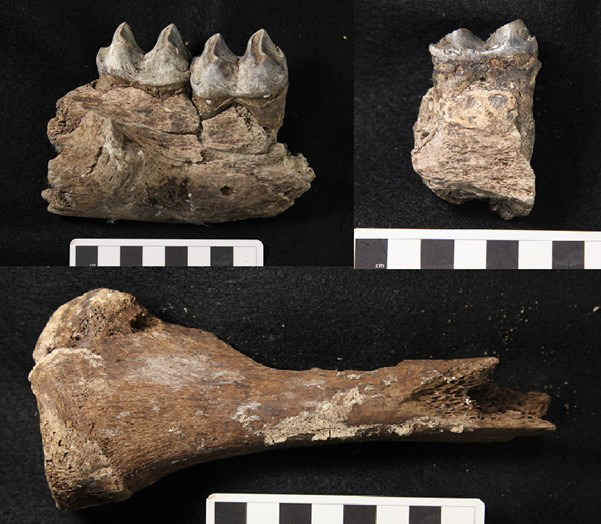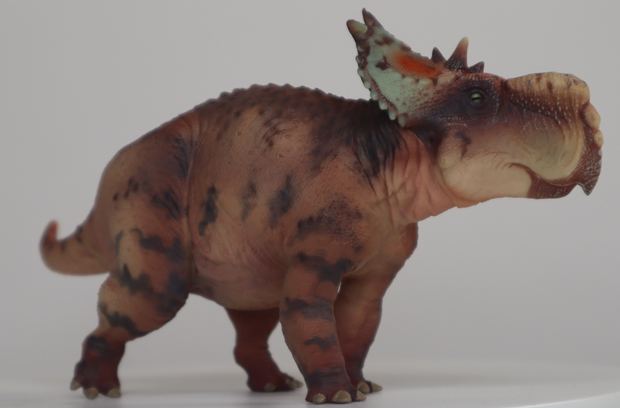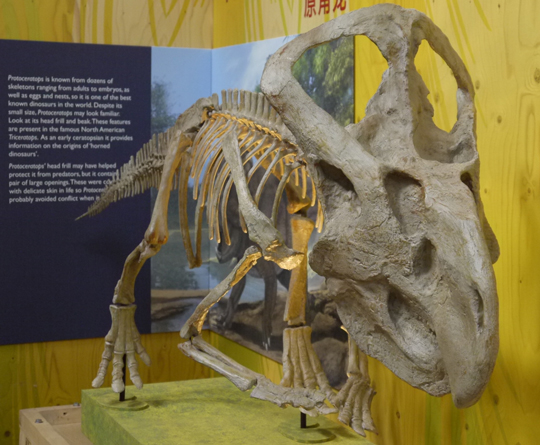Fossil finds, new dinosaur discoveries, news and views from the world of palaeontology and other Earth sciences.
New Study Reveals Link Between the Sleepy Koala and Thylacoleo carnifex
A surprising evolutionary link between today’s passive, sleepy koalas and the fearsome “marsupial lion” – Thylacoleo carnifex is revealed. Evidence provided by collagen peptide data favours a close relationship between the extinct Thylacoleo and the koala. The study, published in the Proceedings of the Royal Society B, suggests that these very different marsupials are part of a broader clade including wombats and the extinct genera Zygomaturus and Palorchestes.
The research was led by Dr Michael Buckley (University of Manchester). An international team of researchers analysed fifty-one marsupial bones collected from caves and swamps across Tasmania. Their results provide the first biomolecular data linking several extinct Australian megafauna species to their living relatives.

Bone images of the specimens from Mowbray swamp to contrast differences in preservation state from those of Scotchtown Cave. Picture credit: University of Manchester.
Picture credit: The University of Manchester
From a Cuddly Koala to the Marsupial Predator Thylacoleo carnifex
During the Late Pleistocene, the landmass consisting of Australia, New Guinea and Tasmania was home to a rich and diverse megafauna. Fluctuating sea levels as a result of glaciation exposed the continental shelves of today’s islands, effectively linking them all together into a single palaeocontinent. With the end of the glaciation, New Guinea and Tasmania gradually became separated from mainland Australia. It is estimated that New Guinea being separated around eight thousand years ago. In contrast, Tasmania became an island as recently as six thousand years ago.
This ancient landmass, known as Sahul, faced one of the greatest waves of megafaunal extinctions on the planet during the Late Pleistocene. Australia lost nearly ninety percent of its giant land animals. The reasons for this extinction event remain highly controversial. For example, was the extinction of the megafauna due to climate change, the impact of hunting and landscape change by modern humans or a combination of all these factors?
ZooMS (Collagen Fingerprinting)
Using an innovative technique called zooarchaeology by mass spectrometry (ZooMS), or collagen fingerprinting, the team was able to analyse fossils more than 100,000 years old – far beyond the age limit for traditional DNA analysis. This enabled the team to reconstruct evolutionary relationships between extinct and extant marsupials. ZooMS can identify even tiny bone fragments and reveal their species, it could help scientists refine the timeline of when Australia’s megafauna disappeared and how long they overlapped with humans.
Dr Buckley stated:
“Until now, we’ve struggled to determine exactly how many of these extinct species were related because Australia’s hot climate destroys DNA over time. However, collagen proteins survive in much older and even extremely fragmented bones, allowing us to identify species and reconstruct the evolutionary relationships between extinct and living marsupials that could not be achieved through traditional methods.”
The research revealed that the extant koala and the extinct Thylacoleo carnifex shared a common ancestor around 25-35 million years ago.

A collection of extant marsupials from Australia including wombats, tree kangaroos and koalas. A new study has provided fresh insights into evolutionary relationships. Picture credit: Everything Dinosaur.
Picture credit: Everything Dinosaur
Clarifying the Vombatiformes
The research also provides new biomolecular data helping to clarify diprotodontids. Analysis of ancient collagen sequences associated with the extinct species Zygomaturus trilobus and Palorchestes azael confirmed that these species belonged to the broader wombat/koala group known as the Vombatiformes.
Dr Buckley explained:
“ZooMS also allows thousands of fossil specimens to be analysed quickly, so it could be a game-changer for the study of extinct species. We can now identify more fossils, improve extinction chronologies, and better understand ancient biodiversity.”
The increasing use of collagen to retrieve phylogenetic information—as one among many tools—offers great potential to better understand the diversity and evolution of past life on Earth.
Everything Dinosaur acknowledges the assistance of a media release from the University of Manchester in the compilation of this article.
The scientific paper: “Collagen fingerprinting and sequence analysis provides a molecular phylogeny of extinct Australian megafauna” by Michael Buckley, Kieren J. Mitchell, Lee J. Arnold, Elizabeth H. Reed and Rolan Eberhard published in the Proceedings of the Royal Society B.
The Everything Dinosaur website: Models of Prehistoric Animals.





































